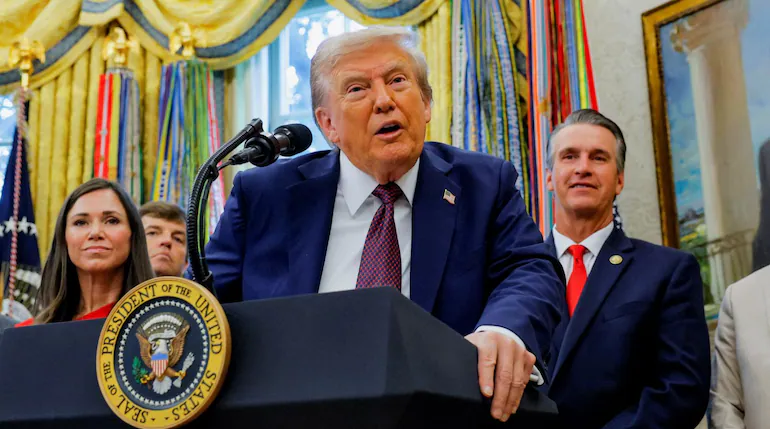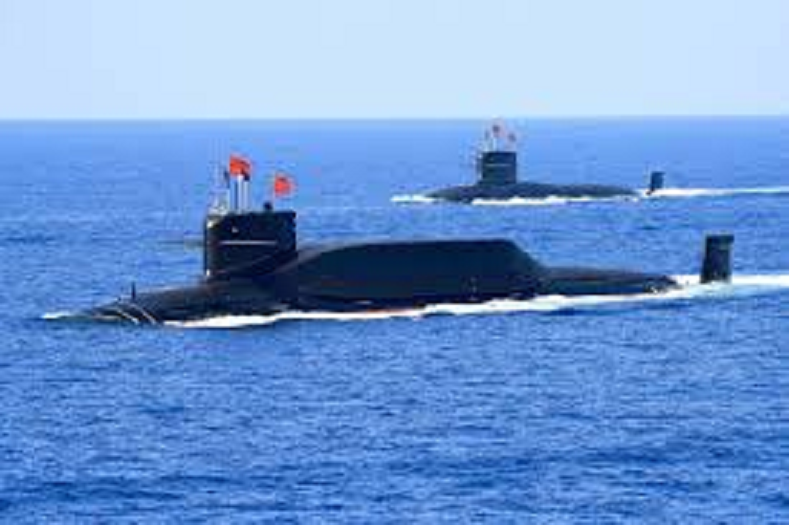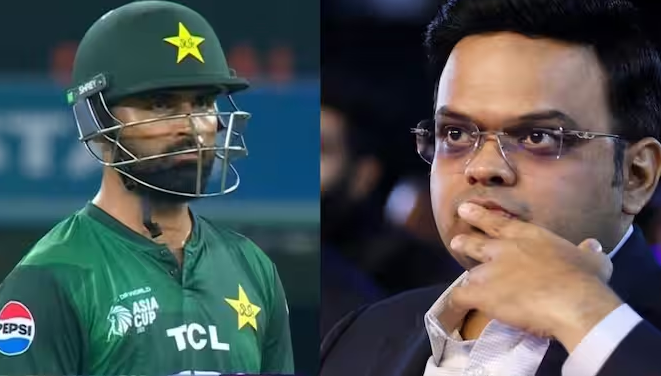Trump Defends 50% Tariffs on India, Calls Trade Relationship ‘One-Sided for Decades’
- byManasavi
- 03 Sep, 2025

Washington: US President Donald Trump has once again defended his administration’s decision to impose 50% tariffs on Indian goods, arguing that trade relations between the two countries have been “one-sided” for many years. Speaking to reporters at the White House on Tuesday, Trump claimed that India had long charged the highest tariffs in the world, making it difficult for the US to expand trade.
Trump’s Justification for Tariffs
“America’s relationship with India is strong, but for decades it was completely one-sided,” Trump said. “India has been charging us tremendous tariffs — the highest in the world. They were able to sell everything to our country because we didn’t charge them foolish tariffs in return. But we couldn’t sell much to them.”
Trump added that his administration’s decision to implement tariffs was aimed at correcting this imbalance. He also referred to India’s energy and defense procurement, alleging that New Delhi continues to import most of its oil and military equipment from Russia while purchasing far less from the United States.
Claims of a Tariff Reduction Proposal
A day earlier, Trump claimed that India had recently offered to “substantially reduce tariffs” on US goods. However, he dismissed the move as “too late.” According to him, such steps should have been taken years ago to prevent the widening trade gap.
“India sells massive amounts of products to its biggest customer, the US, but we sell very little to them. It’s been a one-sided relationship for decades. Now they’re offering reductions, but the time has already passed,” Trump remarked.
SCO Summit Context
Trump’s comments came as Prime Minister Narendra Modi attended the Shanghai Cooperation Organisation (SCO) Summit in Tianjin, where he held bilateral meetings with Russian President Vladimir Putin and Chinese President Xi Jinping. The timing of Trump’s remarks has been seen by analysts as a signal to both domestic and international audiences about his uncompromising trade stance.
America’s Tariff Strategy
Under the Trump administration’s latest policy, India faces a 25% reciprocal tariff on trade imbalances and an additional 25% penalty tariff for continuing crude oil purchases from Russia. This brings the total US tariff burden on Indian goods to 50% — the highest in the world, according to Trump.
India’s Response
The Indian government has strongly rejected Washington’s claims, labeling the tariffs “unreasonable and unnecessary.” Prime Minister Modi has emphasized that India will protect its farmers, small industries, and livestock sector, even under increased external pressure.
“We will not compromise on the interests of our people. Pressure may increase, but India will withstand it,” Modi stated in response to the US measures.
Bilateral Trade Figures
Despite tensions, trade between the two countries has continued to grow. In fiscal year 2024–25, India-US bilateral trade reached $131.8 billion, with Indian exports valued at $86.5 billion and imports from the US at $45.3 billion.
Key Takeaway
Trump’s latest comments highlight escalating trade frictions between Washington and New Delhi. While the US President insists that tariffs are necessary to fix a long-standing imbalance, India views them as politically motivated and harmful to mutual growth. With Modi engaging closely with Russia and China at the SCO summit, the US-India economic relationship appears set for further turbulence in the months ahead.




